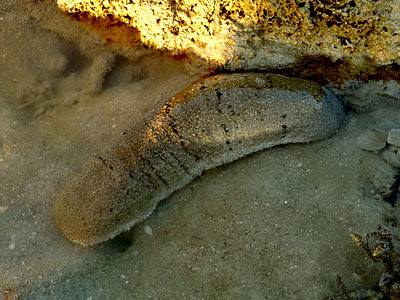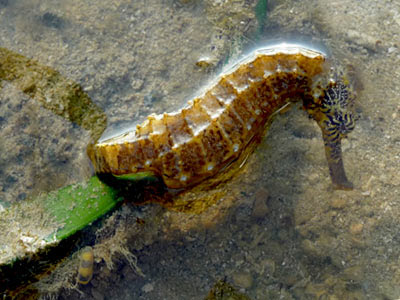We had a public walk at Semakau Landfill today, and I followed MY's group to help her along since she's still quite new at this.
It was quite a good day with several interesting finds, and here's a quick look at some of the things we saw :)
We saw all of what I called the "Big Five" sea cucumbers of Semakau. The above is a synaptid sea cucumber (Family Synaptidae). We saw several of them today among the sea grass, and all of them at least 1.5-2m long!
Spotted this ocellated sea cucumber (Stichopus ocellatus) while the group is crossing the sea grass meadows.
Another common sea cucumber we saw was this sandfish sea cucumber (Holothuria scabra). This is the species we Chinese eat. However, they must be properly treated to remove the toxins before they can be consumed.
Found this dragonfish sea cucumber (Stichopus horrens) stuck high and dry among some rocks. We also saw the stonefish sea cucumber (Actinopyga lecanora), but I didn't take a photo of it.
As per usual, the stars of the day are the knobbly sea stars (Protoreaster nodosus).
And we found two of them today :)
And we also saw two long-spined sea urchins (Diadema setosum), and I found a really huge one close to the edge of the reef crest!
SY found this female sea horse (Hippocampus sp.) above. He was ultra excited as this is the first time a seahorse was spotted by him at Semakau :P
I found another seahorse at another area, but this time round, it's a male seahorse, and it's pregnant! Male and female seahorses take turns to get pregnant. The females will get pregnant with eggs, and when the eggs are mature, they will deposit the eggs using an ovipositor into a brood pouch on the males' tummy, and the baby seahorses will hatch in the pouches.
We also saw several nudibranchs. The one above is probably a Platydoris scabra.
And this is another nudibranch, probably a Chromodoris lineolata.
And our hunter-seekers managed to find nemo for us too! The above is an ocellaris clownfish. While it looks rather similar to the clownfish featured in "Finding Nemo", they are of different species.
At the edge of the reef crest, there were lots of magnificent anemone (Heteractis magnifica), but I couldn't find more clownfishes in them.
Semakau has lots of hard corals, and the above is one which I have no idea of the exact ID.
While we were heading back to the bus pickup point, we spotted this noble volute (Cymbiola nobilis) which apparently had just finish laying its eggs in the coral rubble area.
It was certainly a good day on the whole. Hopefully the participants enjoyed the trip too :)
Saturday, June 21, 2008
Semakau Walk on 21 Jun 2008
Subscribe to:
Post Comments (Atom)

1 comment:
These are beautiful pictures!
Post a Comment